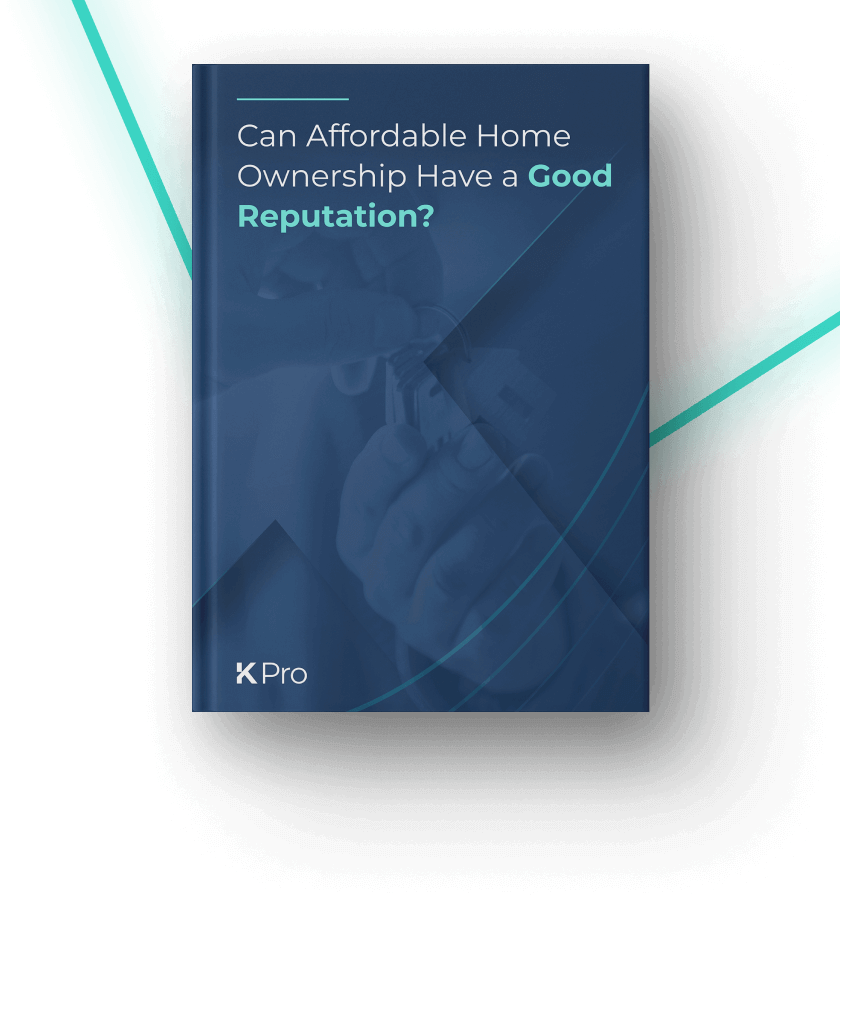
What’s the Best CRM for housing associations?
Digital transformation continues to impact nearly every sector of the economy, including real estate investment, development, and management. Yet the affordable housing sector has been chronically underserved by software providers, and the unique requirements of the industry make it hard to use generic tools.
Digital transformation continues to impact nearly every sector of the economy, including real estate investment, development, and management. Yet the affordable housing sector has been chronically underserved by software providers, and the unique requirements of the industry make it hard to use generic tools.
There are three main CRMs used by housing associations and affordable housing providers. All work fine, but none are really fit for purpose. They are:
- Salesforce: The global behemoth built for enterprise operations.
- Microsoft Dynamics 365: Another global giant that is used by businesses of all kinds.
- Reapit: A property-specific tool built for the commercial market that is often repurposed by affordable housing providers.
All three of these CRM systems offer a load of functionality, but none are tailored to the operations of housing associations or affordable housing providers. The result is inefficiencies emerging from these “less than ideal” workflows.
As not-for-profit entities, these inefficiencies can hit housing associations’ operations hard, adversely impacting efficiency, governance, customer service and overall reputation. This can damage income, which hurts reinvestment. As the number of different tenures expand and more people move towards shared ownership schemes, creating sophisticated CRM solutions increases in importance.
Put simply, getting the technology set up right can boost every area of operations. The future of housing associations means better solutions for housing associations. Getting your CRM right is a crucial piece of this picture. Here, we’re going to look at what housing associations need from a CRM, and how to build the right solution.
Suggested reading: If you want to learn more about the impact of digital transformation on affordable housing, check out our new eBook — Can Affordable Home Ownership Have a Good Reputation?

What does a CRM for housing associations need to deliver?
CRMs can be powerful tools for business operations. But if you’re a housing association or affordable housing provider, there are important additional challenges you need to resolve. These challenges are where traditional CRMs begin to stumble.
Many of these issues arise from the extra complexity inherent to the affordable housing (and affordable home ownership) sales processes. Complexities like:
- Listings on multiple property platforms: Affordable housing listing details go beyond what’s needed for ‘normal’ property rental or sale information. On top of that, different platform have their own processes and requirements.
- Incoming lead information: Drawn from multiple platforms, potentially relating to multiple properties.
- Contracts: Including unusual elements like equity percentages.
- Documentation: Specific to housing associations and affordable home ownership providers to meet compliance requirements.
- Reporting: Reporting features can help facilitate longer-term and shorter-term planning.
Storing, organising, and listing these kinds of complex information isn’t enough. A CRM for housing associations should also enable you to keep in contact with tenants throughout their customer journey.
Does your CRM also need to be a listing tool?
Isn’t that a little bit unfair? CRMs, after all, don’t usually need to be able to list complicated property and contract details across various property websites. While that’s true, a good CRM should — and can — improve processes within an affordable housing software use case.
Listing across multiple platforms with one click is crucial for efficient and effective sales and marketing for affordable housing. A centralised, simple listing solution can help you keep track of multiple properties, each listed on more than one property website. Without such a system, the listing process becomes a time sink. Not only that, but the potential for increased errors can have adverse downstream effects on customer relationships, your reputation, and your performance.
Further, multiple properties and multiple property listing platforms naturally result in a variety of inbound information when customers start to register their interests. Alongside the efficiencies provided by one-click listings, a centralised hub for outbound listings and inbound leads is vital for using customer information for remarketing planning.
These should be two sides of the same sales/marketing/business process coin. Yet often, they are handled by (at best) two different systems that don’t integrate well with each other or with other parts of business operations. This situation is especially common in the complex affordable housing space. Integration is the key for separate systems to work smoothly together, and is the topic of our next section.
Improve your affordable home ownership process with a centralised hub for all your listings.
A modular vs end-to-end system
When it comes down to it, you have two general set-up options to get these listing and management processes done. You can build a modular system by linking various tools together and using them to manage your pipelines. Alternatively, you can adopt an “end-to-end” tool that incorporates these sometimes difficult steps (especially listings and inbound information management) into its functions.
Which is better? Well, honestly, it doesn’t matter. A fully integrated modular system is an end-to-end solution — it’s just a different way of getting there. The path that makes most sense for you depends on the particular circumstances of your operations.
Sometimes, it can be disruptive and challenging to try and replace an entire process with a new tool (or tools). Even if full adoption and deployment would deliver much greater efficiencies, this can still be the case.
This means there isn’t a single ‘correct’ answer for which type of system is “better”.. However, it’s essential that whichever method you use, your system is fully integrated at every step, including with your CRM. This is the problem with a lot of standard real estate lead management software and with standard CRMs.
Integration is central to success
Integration is the key factor here. As briefly covered above, housing associations and affordable housing providers face a unique set of conditions when it comes to sales, marketing, remarketing, enhanced customer communication, and analytics. All of these affect what an ideal, streamlined CRM setup should look like.
Integration doesn’t just mean that the system needs to work well itself — it also needs to integrate with your wider operation. Getting this integration right can transform your back-end efficiency. The positive effects can boost every part of your business. Getting it right can also transform your customers’ experiences.
So when considering how to set up, upgrade, or replace your existing system, keep the goal of maximum integration at the front of your decision-making process. Everything needs to work together. If you haven’t achieved that yet, it’s worth considering how to get there as soon as possible.

KPro: A better solution
There isn’t one answer to “what is the best CRM for housing associations?” However, there is a tool that likely forms a part of that answer — that tool is KPro. To be honest, we created KPro, so we are biased.
However, we built KPro to fit around the solution you have, rather than requiring you to commit to one model. KPro isn’t one system; it’s a group of easily integratable modules that link solutions you already use, while augmenting them with the capabilities you’re missing. Those modules include:
- One-click listings (across many platforms, all from a single place).
- Lead centralisation (simply and efficiently by collating leads all in one place).
- Lead automation (KPro includes email and marketing function).
- Process Automation (including the e-signing of documents and allowing users to establish customised internal workflows).
- Reporting and Analytics (through KPro’s custom tools that can generate “whole picture” reports).
- Customer self-service functions (through a customer-facing feature to boost customer experience right through into the tenancy period).
Unlike other tools on the market, these modules were built with the specific needs of housing associations and affordable home ownership in mind. KPro covers the whole process, effectively becoming a CRM, listing tool and much more. But depending on your needs, and the legacy systems you use, KPro can also add additional capabilities to your current CRM.
Either way, what you get is a CRM built for affordable housing, which is exactly what you need. But don’t take our word for it. Get in touch and book a demo today.
CRM for housing associations FAQs
- What CRMs do housing associations use?
There are three main CRMs used by housing associations and affordable housing providers: Salesforce, Microsoft Dynamics 365 and Reapit. While these CRMs are used by affordable housing providers, they are not designed for the affordable housing market. It takes time, money and resource to configure them to fit housing associations’ needs. New CRM technology, like KPro, is designed specifically to meet housing associations complex needs.
- What should a CRM for housing associations do?
A good CRM for housing associations should be able to manage listings across multiple sites, gather inbound and outbound lead information, store customer information, enable associations to contact customers, provide marketing and remarketing capabilities and integrate with your entire business operation.
- What’s the best CRM for housing associations?
CRMs for housing associations need to be designed for and with housing associations due to complex compliance and listing requirements, from staircasing to equity percentages. KPro is a CRM designed specifically for the affordable housing industry. It can be used as a end-to-end or modular solution.
About The Author
Freddie joined Keaze as Business Development Manager in 2021. Freddie has over 8 years of experience in the property industry having carried out roles for BTR developer, PLATFORM_ and more recently Built-ID, a social impact ESG PropTech business.







